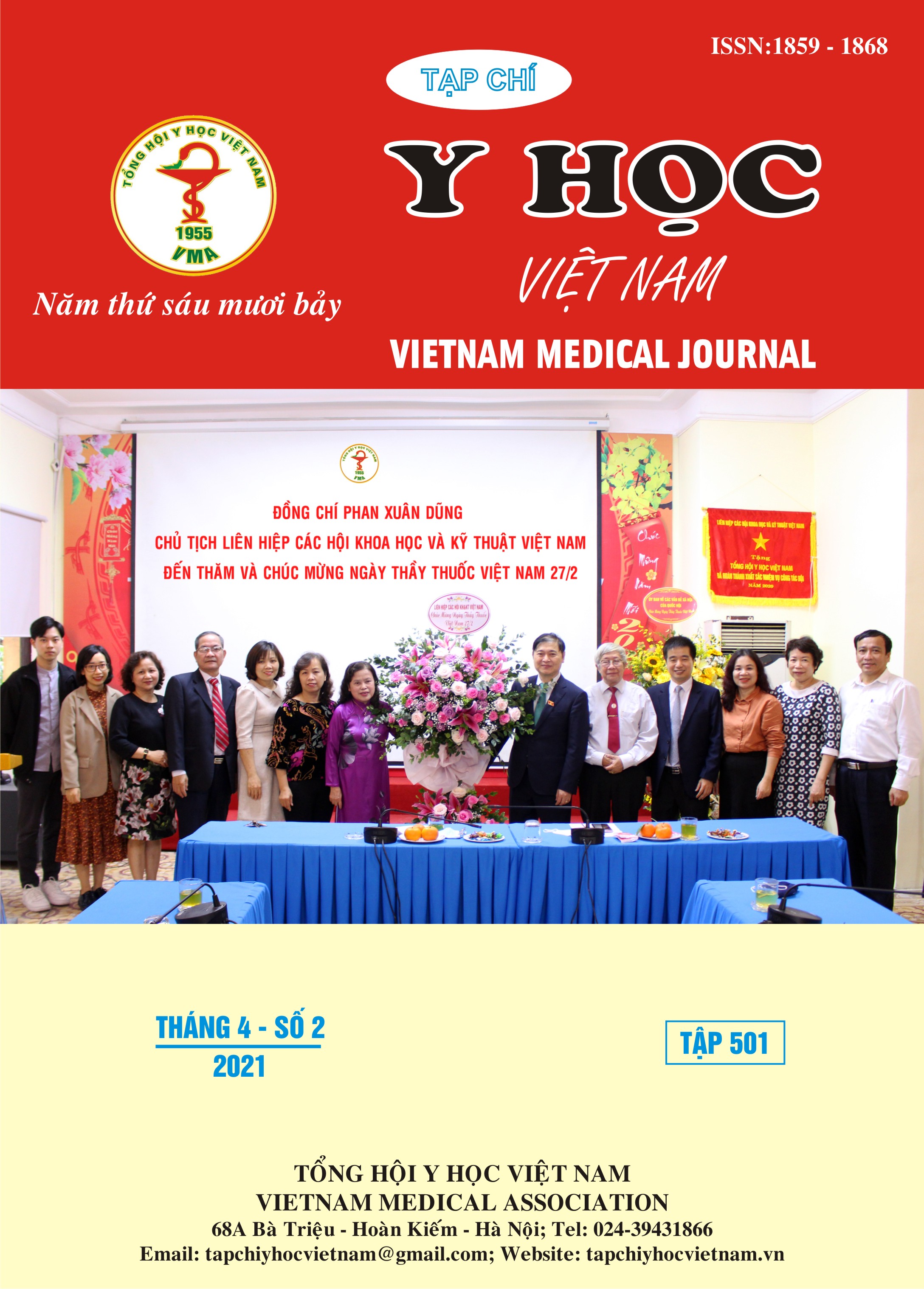EFFECT OF CALCIUM SILICATE-BASED ROOT CANAL SEALER ON TEETH WITH PERIAPICAL LESIONS
Main Article Content
Abstract
Objectives: To assess of postoperative pain level (spontaneous pain and pain when chewing) by visual analogue scale at 6, 12, 24 and 72 hours after filling with calcium silicate-based root canal sealer. To evaluate the size of periapical lesions on X-rays at the time after filling of the canal system, 3 months, 6 months. Methods: The study reported a series of cases, performed on 16 teeth with single root and periapical lesions, were filled with calcium silicate-based root canal sealer of 15 patients (over 18 years old) who came for oral examination and treatment at District 1 Hospital in the period from 07/2020 to 03/2021. Results: The mean age of the study participants was 50.6 years, female accounted for 43.7%. There were 37.5% of patients with abscesses around the tooth apex. After 3 months, 100% of teeth had no abscesses, no more clinical signs. The highest level of spontaneous pain and chewing pain of the patient was immediately after root canal obturation on the VAS scale (3.8 points and 3.9 points), then gradually decreased at different times. After 6 hours, 12 hours, 24 hours and the lowest is after 72 hours of sealing the canal system (0 point). The average area of the radiographic were measured by ImageJ software and the peri-apical lesion size on the radiograph according to the PAI index after root canal obturation was higher than 3 months, 6 months and at 3 months it was higher than 6 months ( p <0.05). Conclusion: The results showed that the effectiveness of calcium silicate-containing root canal sealer in the treatment of chronic apical periodontitis: healing or improvement of radiographic conditions of periapical bone destruction with X-ray signs of bone regeneration.
Article Details
Keywords
periapical lesion, sealer, calcium silicate
References
2. Võ Thị Thủy Tiên (2017) Hiệu quả kháng khuẩn và độc tính với tế bào xương của xi măng trám bít ống tủy BioRoot RCS: nghiên cứu In Vitro, Luận văn thạc sĩ y học, Đại học y dược Thành Phố Hồ Chí Minh,
3. Atav Ates A, Dumani A, Yoldas O, Unal I (2019) "Post-obturation pain following the use of carrier-based system with AH Plus or iRoot SP sealers: a randomized controlled clinical trial". Clin Oral Investig, 23 (7), 3053-3061.
4. Gadzhula NG (2016) "Clinical Effectiveness of Treatment The Patients With Chronic Apical Periodontitis". International Journal of Medicine and Medical Research, volume 2 (Issue 2), p. 30-33.
5. Kawther Bel Haj Salah, Sabra Jaâfoura, Mahdi tlili, Marwa Ben Ameur, Saida Sahtout1 (2021) "Outcome of Root Canal Treatment of Necrotic Teeth with Apical Periodontitis Filled with a Bioceramic-Based Sealer". International Journal of Dentistry, 2021, 1-8.
6. PrzemysBaw Reszka, Alicja Nowicka, Mariusz Lipski, WBodzimierz Dura, Agnieszka Drofdzik, and KrzysztofWofniak (2016) "A Comparative Chemical Study of Calcium Silicate-Containing and Epoxy Resin-Based Root Canal Sealers". elsevierhealth,
7. Sasha Dimitrova-Nakova, Emel Uzunoglua, Hector Ardila-Osorioa, Anne Baudrya, Gilles Richardb, Odile Kellermanna, Michel Goldberga (2015) "In vitro bioactivity of BiorootTM RCS, via A4 mouse pulpal stem cells".
8. Silva Almeida LH, Moraes RR, Morgental RD, Pappen FG (2017) "Are Premixed Calcium Silicate-based Endodontic Sealers Comparable to Conventional Materials? A Systematic Review of In Vitro Studies". J Endod, 43 (4), 527-535.


